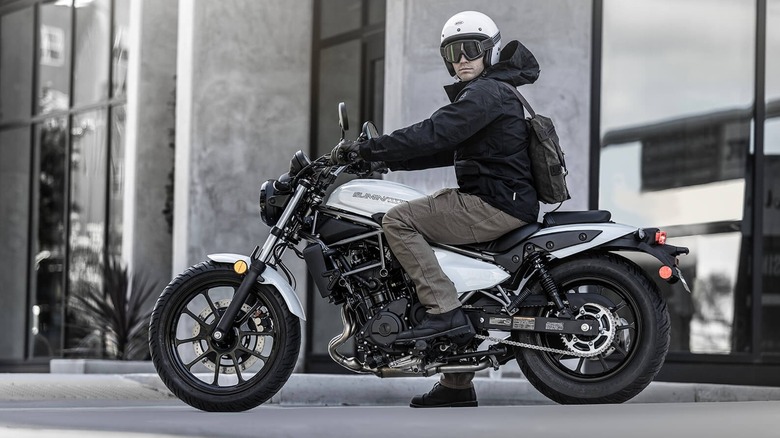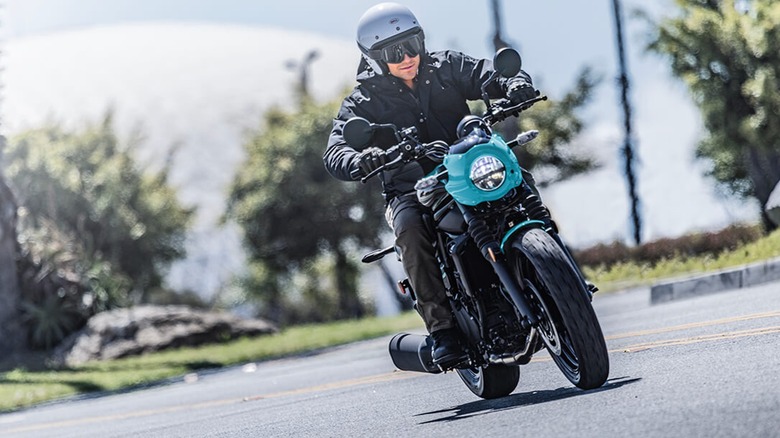The Best Years For Kawasaki's Eliminator Motorcycle (And Some To Avoid)
Kawasaki first applied the Eliminator name to the 1985 ZL900. Through the remainder of the 1980s, the Kawasaki Eliminator was offered in a variety of models, including 250, 400, 600, 750, and 1000 cubic-centimeter engine displacements. The 1990s saw the introduction of Kawasaki Eliminator models such as the 125 and 252. Kawasaki discontinued one Eliminator model after another throughout the period, finally pulling the plug entirely by the mid-2000s. The Eliminator 125 was the last to succumb, finally losing the battle in the UK in 2007.
Kawasaki revived the Eliminator name in 2023 with the introduction of the Eliminator 400 and upgraded 400 SE models. The newest version came the following year with a larger 451cc parallel-twin, an engine shared with the Ninja 500 and Z500 models, known as the 2024 Kawasaki Eliminator. The 2025 Kawasaki Eliminator SE offers standard ABS at a recently reduced MSRP of $7,099, making it one of the most affordable Kawasaki motorcycles.
For the best value in a real retro motorcycle, the original ZL900 Eliminator is a good option if you can find one in mint condition or have the capability to restore one. Overall, it's difficult to find anything negative about the entire range of Kawasaki Eliminator motorcycles. However, the newest generation sports nice-to-have features, especially for new riders, like smartphone connectivity, optional ABS, and assist and slipper clutches.
Are there any Kawasaki Eliminator years to avoid?
As we've said, the entire range of Kawasaki Eliminator motorcycles appears to be largely free of glaring defects that would warrant caution. The original models from the 1980s and 1990 are going to show some age at this point. Even garage kept models will need some refurbishing such as cleaning of carburetors, replacing seals, and ignition system tune-ups. The newest models produced from 2023 and up should offer ready to ride models unless they've been abused or neglected.
Engine size may be the most significant factor when deciding on which models to avoid. The largest Eliminator models date back to the mid-1980s such as the aforementioned ZL900 but adding in the ZL1000 and ZL750. The 2024 and 2025 Eliminators are capable cruisers for short commutes with their 451cc engines, but the 2023 model will be underpowered for some riders with its smaller 398cc engine.
Depending on your needs, the smaller Eliminators, with horsepower ratings as low as 12 hp from the Eliminator 125 or the slightly larger 250cc-class Eliminators could be a great choice. However, while these beginner-friendly models may suit smaller, younger riders, larger adults should avoid them as daily transportation.
How does the 2025 Kawasaki Eliminator compare with the original ZL900?
Among the biggest differences between the 2025 Kawasaki Eliminator and the 1985 ZL900 Eliminator founding model, are power and technology. The ZL900 featured a 908cc inline four-cylinder engine that produced 105 horsepower and 63 lb-ft of torque. While Kawasaki doesn't provide horsepower ratings for the 2025 Eliminator, its 31.7 lb-ft of torque is the same as the 2025 Ninja 500's 451cc engine, rated at 51 horsepower.
With forty years separating the two extremes, the 2025 Kawasaki Eliminator has the advantage of improved tech. While the 1985 ZL900 featured disc brakes front and rear, the addition of the ABS option reduces stopping distances and improves control under hard braking. And smartphones weren't even a thing in 1985.
The 1985 ZL900 had a dry weight of 525 pounds, compared to the reported dry weight of the 2025 Eliminator at around 360 pounds. While the 2025's lighter weight can't completely negate the ZL900's power advantage, it does close the gap somewhat.
The power disparity is clearly evident when comparing the top speed of the 2025 Kawasaki Eliminator to that of the ZL900. The newest Eliminator posts top speeds just a tick over 100 mph. In contrast, the ZL900 Eliminator could reportedly reach 134 mph.


